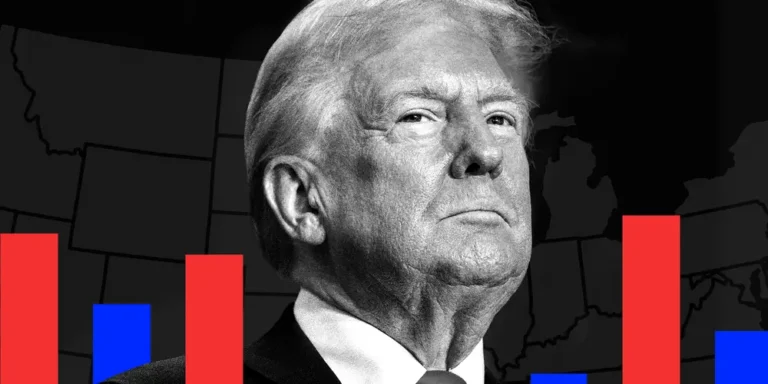Wall Street landlords are selling homes back to Main Street. Here’s what it might mean for runaway housing prices.

- Institutional managers of single-family homes for rent usually sell houses to each other.
- New data obtained by Insider shows they are increasingly selling to regular people.
- It is a sign that the housing market is cooling, but don’t hold your breath for lower prices.
For the past few years, a group of real estate investors known as Wall Street landlords have been on a buying spree that has both enthralled and infuriated the country.
It appears that they are now selling more of these homes to regular homeowners.
According to data provided exclusively to Insider by Attom Data, a housing data tracker, the two largest publicly traded managers of single-family homes for rent, or SFRs, are on track to more than double the number of homes they’ve sold to people rather than corporate entities.
According to Insider’s analysis of data from real estate tracker Attom Data, the companies — Invitation Homes and AMH — have already sold 1003 homes to non-corporate buyers this year through July. That is more than these companies sold to small-business buyers in 2022 (760) and 2021 (498).
Traditionally, these large, institutional landlords prefer to sell large blocks of homes, which necessitates trading inventory with other corporate landlords who profit from renting. The group, which has included Wall Street firms such as Blackstone (which spun off Invitation Homes), has been blamed for exacerbating the housing shortage, which has driven up real-estate prices.
If current sales trends continue, Invitation Homes and AMH could more than double their sales to non-corporate buyers by 2022, and may even exceed their sales to individual buyers in any year since 2017.
Invitation Homes sold 785 homes to non-corporate buyers in 2019, compared to 225 sales through July of this year. However, the combined sales of the two REITS to non-corporate buyers in the first seven months of 2023 have already surpassed the 981 sales to non-corporate buyers in 2019.
Annual data dating back to 2017 can be found in the chart below.
Attom obtained the information from a variety of public records. It removed sales to buyers with corporate names from the dataset, including anything with an LLC or Fund in it. According to Attom Data, it could be missing some sales because some property records can take 45 days to appear in the data, and it’s possible that Insider’s request missed some subsidiary names for the two SFR behemoths.
An Invitation Homes spokesperson noted that the numbers were hit-or-miss, but that of the roughly 1,700 homes sold by the company since 2021, “all but 70 of them were listed on MLS for anyone to buy,” though not all of those were sold through the MLS. AMH refused to comment.
So, what does this mean for prospective homebuyers, renters, and investors?As institutional investors reduce their buying and selling to one another, it may increase inventory for mom-and-pop buyers, causing prices to fall (theoretically). However, prices will most likely remain high. Let’s look into the possibilities.
Big investors sell to the regular housing market
This year’s biggest transaction news in the SFR market was Invitation Homes’ $650 million purchase of nearly 1,900 Sun Belt homes, with more than three-quarters of the capital coming from cash.
The transaction was notable because institutional investors have largely refrained from purchasing due to high interest rates. According to Invitation Homes CFO Jon Olsen, the transaction reflected a “significant discount to market value,” implying that selling large portfolios of homes is no longer as profitable as it once was.
Indeed, portfolios of single-family rentals are trading at significant discounts to the underlying real estate value, raising the question of why sell these assets now and to individual homebuyers.
On recent conference calls, executives from both Invitation Homes and AMH stated that they are selling in order to redeploy capital into better rental markets, often into new construction built-for-rent communities that are easier to operate and in higher performing locations.
Due to rising property taxes and insurance costs, operational prices have risen significantly in some markets.Due to a lack of housing supply, which has kept prices high even as mortgage rates rise, selling homes in markets where operating rentals are more expensive is a profitable play.
“The market not having enough overall supply in the resale space has allowed us to, when we decided to sell homes, get really good what I would call kind of end-user sales prices,” Invitation Homes CEO Dallas Tanner said on a July earnings call.
However, one-time sales are not nearly as simple or inexpensive as selling a large portfolio. Tanner stated that, while the company does well with individual buyers, there are “frictional costs” to this method. Increased broker fees, renovation costs, and the time required to complete these transactions can eat into any profits gained by selling to individuals rather than corporations.
Nonetheless, Tanner told Wall Street stock analysts that the company plans to be “a little bit more aggressive selling some homes this year” to capitalize on current pricing.
What does it mean?
Home prices increased by nearly a third between the spring of 2020 and June of 2022, thanks to a powerful combination of record-low interest rates, remote-work trends, and an influx of investors. Even though interest rates have risen and the market has slowed significantly, home prices have barely moved.
The issue is that there is so little inventory in the market due to “the lock-in effect” on so many mortgages held by current property owners, according to Tanner of Invitation Homes. Homeowners will not sell if they discover that the current mortgage market makes their dollars go further, resulting in a decrease in housing market inventory. As a result, prices have been “buoyed up,” according to Tanner, despite rising interest rates, which should cause them to fall.
According to Gary Beasley, CEO of single-family rental sales and services platform Roofstock, the trend has created a new sales channel. Roofstock has historically focused on portfolio transactions, but its analysis has revealed that selling individual home sales on the MLS platform has become the better business model.
“Now, almost without exception, the best bid is to market it through local brokers,” Beasley explained. The company has formed the Scaled Seller Services Initiative to handle the operational work of selling these individual homes at scale, in collaboration with local brokers. He’s already had a half-dozen clients join the platform, and there are many more on the way.
During a trip to New York City in July, Beasley interviewed a variety of investors. They stated that they do not anticipate price decreases. They believe that prices have mostly stabilized, but they are waiting for interest rates to fall. Once that happens, deals will fall into place.
Meanwhile, Individual Homes and AMH sales, which equate to a few hundred extra homes sold this year, are unlikely to lower prices because they represent only a tiny fraction of the millions of homes sold this year. Depending on who you ask, America is short between one and six million homes, and home listings have plummeted to their lowest level since 2012.
The recent sales trend suggests that rent prices may remain high.
Invitation Homes increased its core revenue guidance for the second half of the year in its earnings report last week because its rent prices outperformed expectations. “The single-family rental sector remains on solid footing with durable and consistent fundamentals driven by the growing demand for single-family rentals, ongoing national housing shortage, and challenging home affordability dynamics,” AMH CEO Dave Singelyn said.






